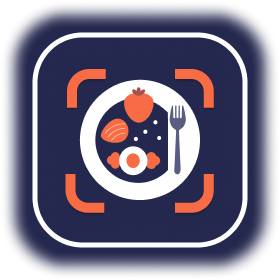As we emerge from Thanksgiving, gratitude remains in the air - and science suggests we should keep it there year-round, especially regarding our relationship with food. Research increasingly shows that practicing gratitude improves eating behaviors, reduces emotional eating, and supports healthier food choices. This isn't mystical thinking - it's psychology backed by measurable outcomes.
Track with Gratitude
Transform photo tracking into a gratitude practice. Each meal becomes an opportunity for appreciation and mindful awareness.
Download Free AppThe Science of Gratitude and Eating
Research reveals surprising connections:
Reduced Emotional Eating
Studies show grateful people are 25% less likely to eat in response to negative emotions. Gratitude activates reward pathways in the brain that otherwise might seek food for comfort.
Improved Self-Control
Research published in Psychological Science found that gratitude increases patience and self-control. Participants who felt grateful chose healthier options over immediate indulgences more often.
Better Body Image
Grateful people report higher body satisfaction regardless of actual weight. This positive self-regard reduces the shame-based eating cycles that drive many people to overeat.
How Gratitude Changes Food Behavior
The mechanisms behind gratitude's effects:
Present-Moment Focus
Gratitude anchors attention to the present, where mindful eating happens. When thankful for food, you naturally slow down and pay attention - the foundation of mindful eating.
Abundance Mindset
Gratitude shifts from scarcity thinking ('I can't have that') to abundance ('I have so much good food available'). This reduces the deprivation psychology that triggers overeating.
Reduced Stress Eating
Gratitude practice lowers cortisol and stress hormones. Since stress drives many people to eat, reducing stress naturally reduces stress-related eating.
"Starting a gratitude practice seemed unrelated to my weight goals, but it changed everything. I stopped eating from stress and started actually enjoying my food. Photo tracking showed my portions naturally decreased. Lost 15 pounds."
- Sandra P., Lost 15 pounds with gratitude practice
Build Positive Food Relationships
MyCalorieCounter supports mindful, grateful eating. Photo tracking creates the pause that makes appreciation possible.
Start Tracking TodayGratitude Practices for Better Eating
Simple techniques to apply gratitude to food:
Pre-Meal Pause
Before eating, take three seconds to appreciate your food. Consider where it came from, who prepared it, and that you have access to nourishment. This simple pause activates gratitude and mindfulness together.
Food Origin Appreciation
Occasionally consider the journey your food took to reach you - farmers, transporters, store workers. This broader perspective increases appreciation and slows eating pace.
Body Gratitude
Thank your body for what it does rather than criticizing its appearance. Grateful body relationship reduces punitive eating behaviors and supports intuitive, healthy choices.
Gratitude Journaling
Each day, write three things you're grateful for. Research shows this simple practice - taking under 5 minutes - significantly improves emotional well-being and reduces emotional eating.
Gratitude vs. Guilt in Eating
Shifting from negative to positive motivation:
The Problem with Guilt
Food guilt actually increases overeating. The shame cycle goes: eat something 'bad,' feel guilty, eat more to cope with guilt, feel worse, repeat. Guilt is counterproductive.
Gratitude as Alternative
Instead of guilt for what you ate, try gratitude for what you enjoyed. 'I'm grateful I got to taste that amazing pie' feels better than 'I shouldn't have eaten that' - and leads to better subsequent choices.
Appreciating Your Choices
When you eat something indulgent, fully appreciate it rather than mentally punishing yourself. Savoring creates satisfaction; guilt creates seeking more.
Gratitude for Food as Fuel
Appreciating food's purpose transforms relationship:
Functional Gratitude
Be thankful that food provides energy, supports your immune system, builds muscle, and enables activity. This functional appreciation often leads to choosing foods that best serve these purposes.
Performance Appreciation
Thank the meal that fueled your workout, the breakfast that sustained your focus, the snack that prevented afternoon fatigue. Connecting food to outcomes builds positive associations.
Photo Tracking as Gratitude Practice
Photographing your meals can become a gratitude ritual. Use the moment of photographing to appreciate what you're about to eat - the colors, preparation, and nourishment it provides.
Building a Year-Round Gratitude Practice
Extend Thanksgiving's spirit throughout the year:
Morning Gratitude
Start each day naming three things you're grateful for. This sets a positive tone that influences food choices throughout the day.
Meal-Based Practice
Use meals as gratitude triggers. Each time you eat, find something to appreciate - even if it's simply having food when others don't.
Progress Gratitude
Be thankful for health progress, however small. Grateful acknowledgment of improvements motivates continued healthy choices.
Challenge Reframing
When facing dietary challenges, find gratitude within them. 'I'm grateful I have choices to make' reframes restriction into privilege.
Grateful Eating, Better Results
Join thousands who've transformed their relationship with food through awareness and appreciation. Track with intention.
Get MyCalorieCounter FreeConclusion
Gratitude isn't just a nice feeling - it's a practical tool for healthier eating. By cultivating thankfulness around food, you naturally move toward mindful, moderate consumption while reducing emotional eating and food-related stress. As Thanksgiving's gratitude spirit lingers, carry it into your daily eating practice for lasting benefits.
Appreciate Every Meal
Download MyCalorieCounter and bring gratitude to your daily eating. Better awareness, better choices, better results.
Download Now - FreeJoin 50,000+ mindful eaters
